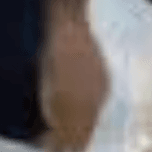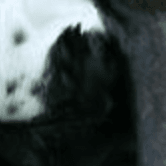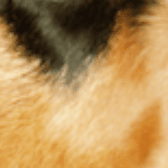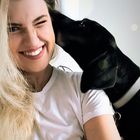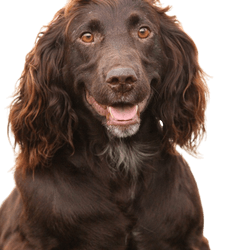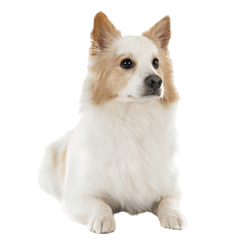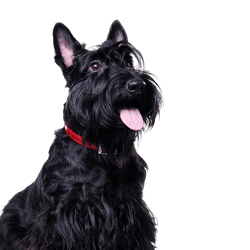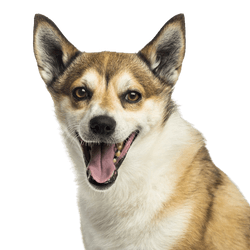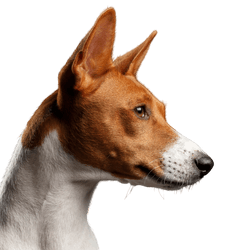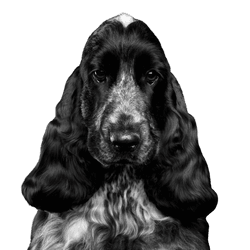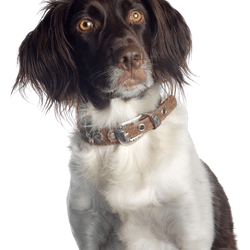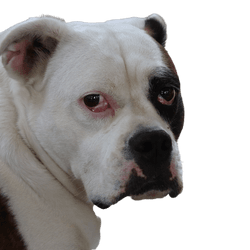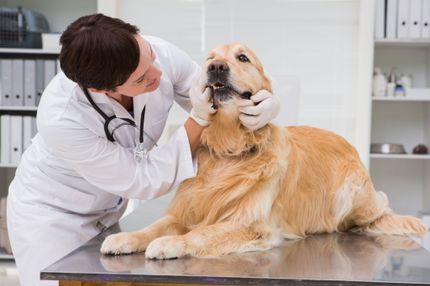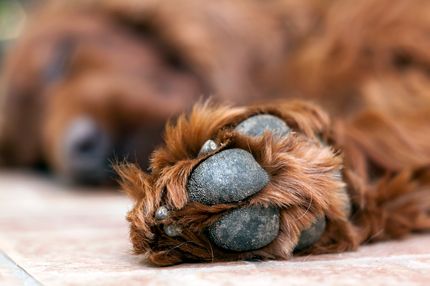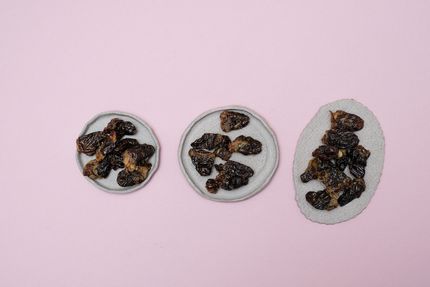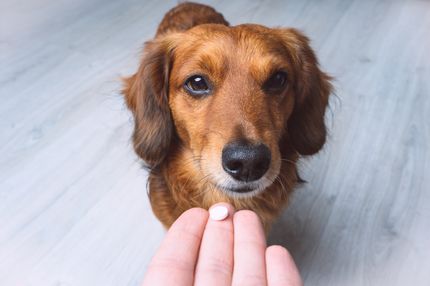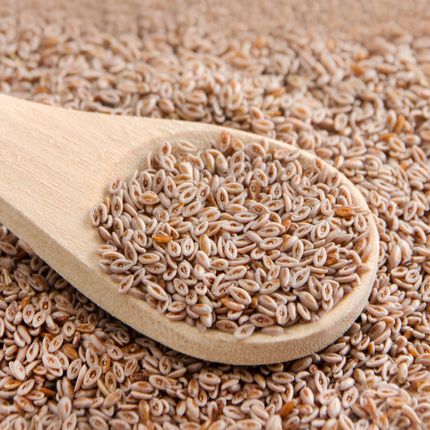Facts & Origin
Origin and history of the Shetland Sheepdog
The Shetland Sheepdog comes from the Shetland Islands, northeast of Scotland and also got its name from there. In order to improve the herding qualities of their small Spitz-like dogs, the local farmers crossed Border Collies. From Greenland dogs, which were brought by the whalers, the Shetland Sheepdog inherited robustness and weather insensitivity. According to old stories, King Charles Spaniels were also involved in the creation of the Sheltie. To refine the dogs and to further improve the herding dog qualities, longhaired Collies were later crossed in.
Ultimately, the Shetland Sheepdogs found their work in guarding and herding the Shetland sheep, which were also quite small. For example, in order not to do damage while herding in a rocky area as they climbed over them, a light weight was an advantage. Often they were even left alone for a long period of time while they performed their task. Until the mid-19th century, there was no uniform appearance, and dogs were bred purely for performance.
Suitability and keeping
Today it is hardly used as a herding dog, it has become a lively family, sport and companion dog. His adaptability makes him ideal for beginners.
In addition, the Sheltie makes an excellent dog for participation in agility competitions.
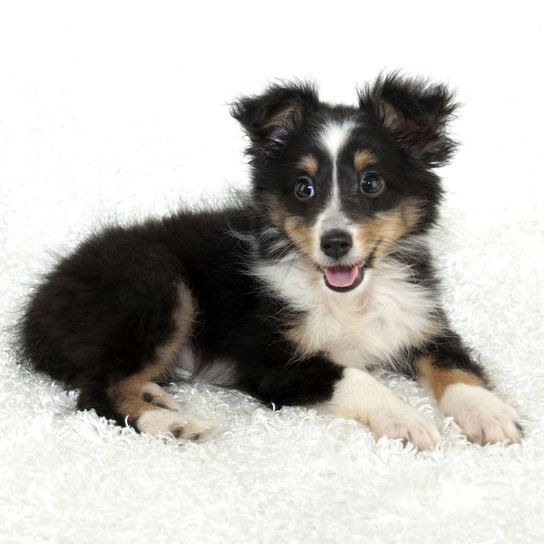
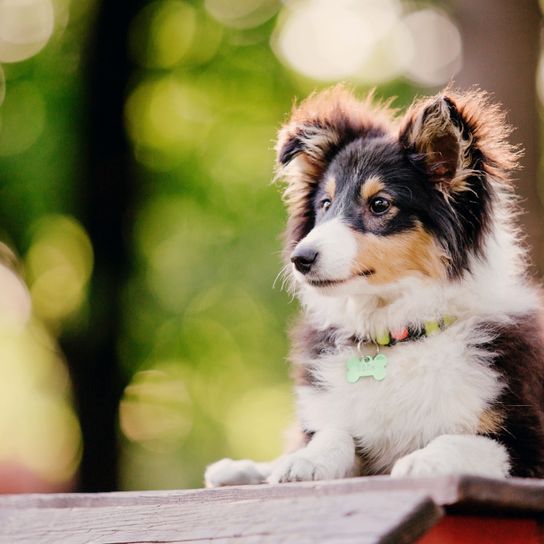
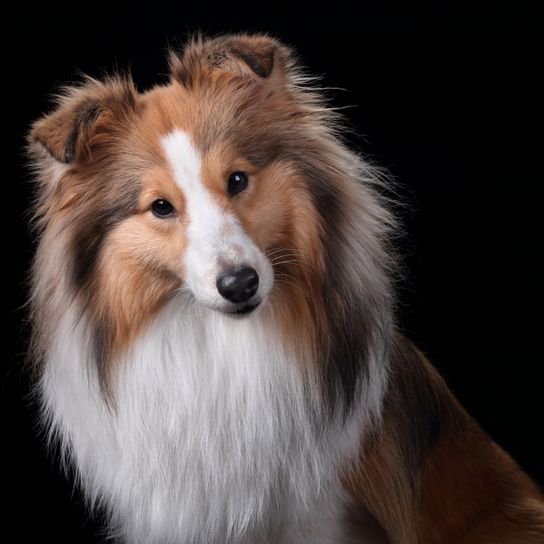
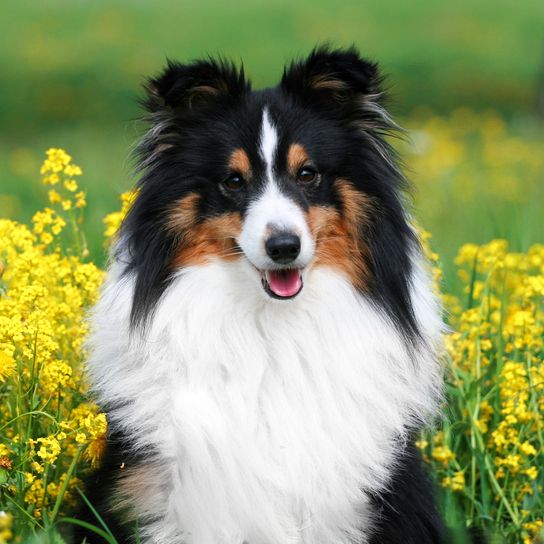
| Alternate Name | Sheltie |
| Origin | Scotland |
| Life expectancy | 12 - 13 years |
| Care requirements | high-maintenance |
| Activity level | high |
| FCI group | Sheepdogs |
| AKC group | working group |
| KC group | working group |
Shetland Sheepdog mixes
Attitude, character and temperament of the breed
Typical character traits of the Sheltie
A Sheltie is a loyal companion who needs constant contact with his owner and is easy to train. He does not like to be left alone, but he usually gets along very well with children as well as with other dogs. With the latter, however, he usually does not seek contact of his own accord: His two-legged friend is more important to him. However, he accepts other dogs or other animals in the household.
Robust, flexible, agile and nimble he had to be in order to fulfill his task as a herding dog. If a Sheltie has something to communicate, it happens with a characteristically loud and very bright bark. This is how he announces strangers to whom he otherwise behaves reservedly. Generally, a Sheltie is suspicious of anything new, but would never become aggressive or nervous about it. Familiarize your Sheltie puppy with as many situations as possible so that these very traits can develop. With a good Sheltie breeder, the little ones have already received their first socialization.
A Sheltie is a robust, pithy fellow, but also very sensitive. Loud, unrestrained behavior towards him he does not tolerate at all. So you should raise your Shetland Sheepdog puppy affectionately, sensitively and nevertheless consistently. Since he does not have a strong hunting instinct, he should be able to run free without any problems if he is trained correctly.
Exercise opportunities
Your dog brings with him a tremendous supply of eagerness to learn and work. The fun a Sheltie has in learning and exercise should therefore spill over to the owner: Long walks or hours of exercise on the training field are mandatory for a Sheltie. With his quick perception, he is constantly looking for new challenges.
At first glance, a Sheltie may seem like aColliein mini sizebut it is not. In terms of character, the small bundle of energy is clearly different from the collie. He is physically and mentally more nimble, more agile than his big counterpart - this is proven by the many Shelties who are successful in agility. Also in other sports like obedience, flyball, dogdancing or discdogging you will meet many Shelties with their owners.
Character
Usage
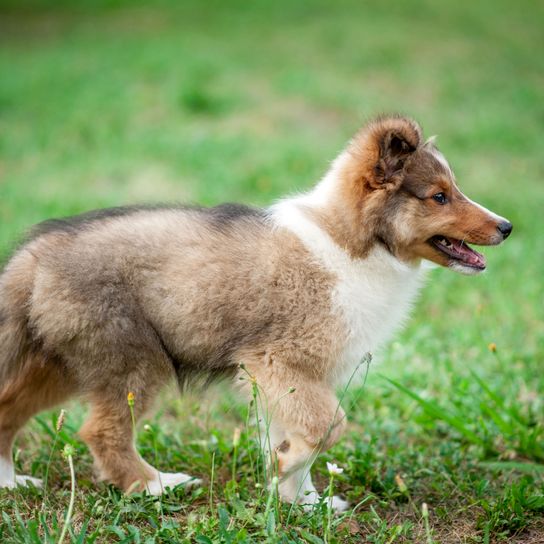
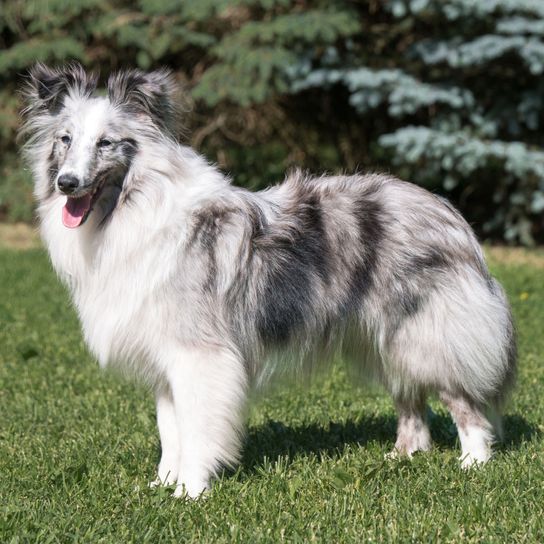
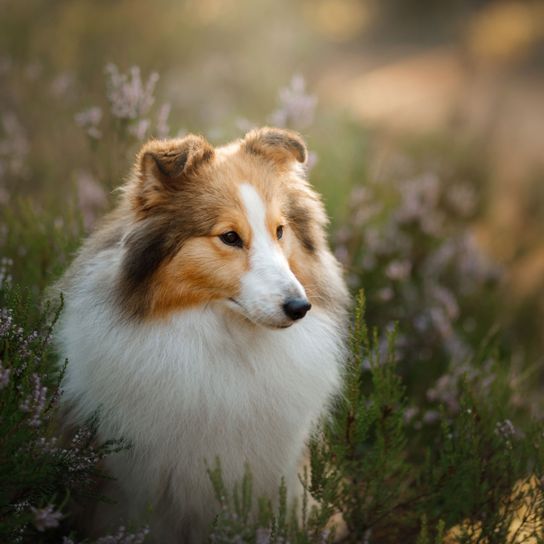
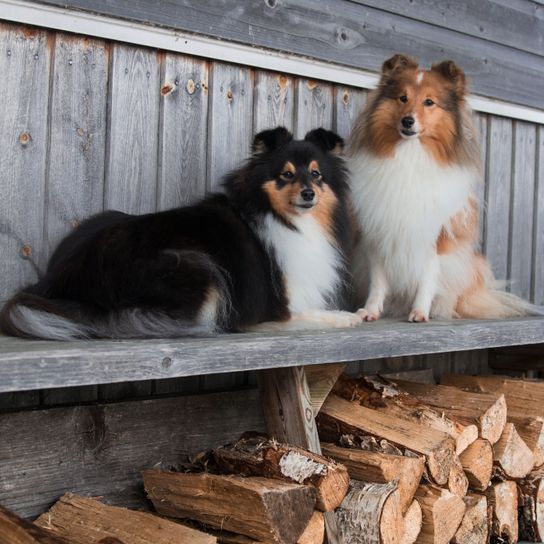
Breed diseases of the Shetland Sheepdog
The Sheltie is considered a relatively robust breed. Nevertheless, within breeding, special attention is paid to the following diseases:
- Dermatomyositis
- MDR1 defect
- Collie Eye Anomaly
- Cataract
- Progressive Retinal Atrophy
- Hip Dysplasia
Sheltie breeding, purchase and adoption
Sheltie breeders must prove that their dogs are healthy. This includes an HD x-ray, proof of MDR1 status, and an eye exam. After that, the dogs are licensed: an expert evaluates the external appearance of the dog. He checks whether the animal meets the breed standard. Therefore it makes sense to buy a dog from a reputable breeder. This way you can be sure to buy a relatively healthy dog as well as to support a good future development of the breed.
It is important to note that two dogs of the merle color must not be mated with each other: The offspring often have malformations of the eyes or become blind and deaf. If this is done nevertheless, one should assume that the breeder is not serious.
From time to time Shelties can be found in animal shelters or animal welfare organizations. Inquire for this at the best with the respective contact points.

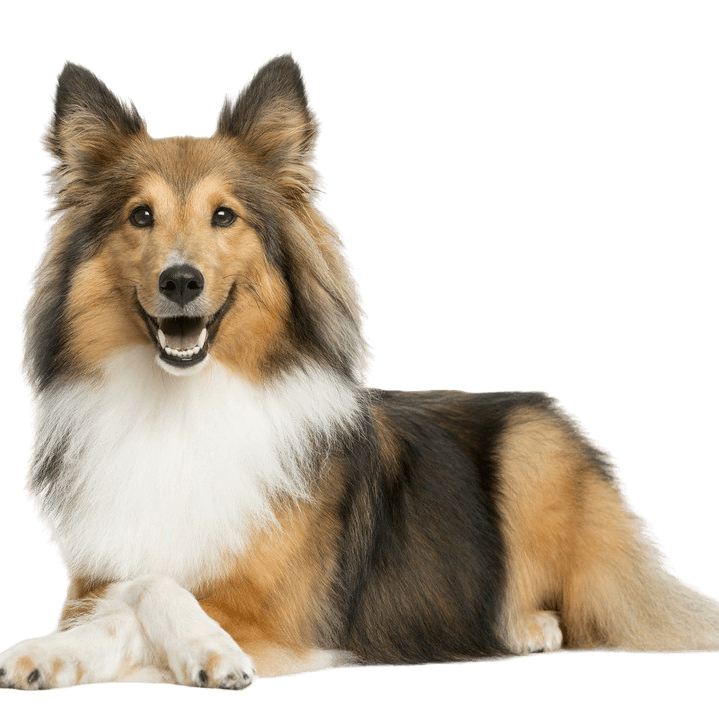
Breed characteristics of the Sheltie
In 1954 followed the recognition of the Shetland Sheepdog as a breed by the FCI. It is classified there as Group 1 (Herding Dogs and Cattle Dogs (except Swiss Mountain Dogs)), Section 1 (Sheepdogs). The breed standard does not require a working test.
Shetland Sheepdog males have an ideal stock size of 37 cm, bitches of 35.5 cm. A deviation of more than 2.5 cm above or below these measurements is highly undesirable in breeding specimens.
The Gait
Supple, flowing and graceful, the gait is endowed with thrust from the hindquarters, covering the greatest possible distance with the least effort. A sound breed specimen should not have a passing gait, a crossing/weighing gait, or stiff, stilted up and down movement.
The Head
The head, when viewed in the overall picture considering the size of the particular dog, is noble and elegant without exaggeration. Seen from above or from the side, it looks like a long, blunt wedge tapering from the ears to the nose. The width and depth of the skull is in proportion to the length of the skull and muzzle.
The flat skull is only moderately broad between the ears, without the occiput protruding. The topline of the skull is parallel to the topline of the muzzle. Shelties have a slight stop, but it is distinct. The cheeks are flat and merge smoothly into the well rounded muzzle.
The muzzle
The characteristic expression of the history skull is achieved by perfect harmony in the junction of the skull and foreface, by the shape, color and placement of the eyes, and by the properly set and correctly carried ears. Both the nose and the tightly closed lips are black, and the jaw should be level, smoothly cut, and strong with a well-developed lower jaw.
A complete scissor bite is typical, with the upper incisors closely overlapping the lower and the teeth set square to the jaws.
The Eyes & Ears
Almond shaped, medium sized eyes are obliquely set with black eyelid rims. Pedigree dogs have a dark brown eye color, except in Blue Merles, where one or both eyes may be blue or blue speckled.
The ears of the Sheltie are small and moderately wide at the base, but set rather close together on the skull. At rest they lie laid back. However, when the dog is alert, they are brought forward and carried semi-erect, with the tips tipped forward.
The rump
The muscular neck of the Sheltie is well arched and of sufficient length to permit a proud head carriage. He has a straight back with gracefully rounded loins and a croup that slopes gradually backward. The chest is deep and reaches down to the elbows, the ribs should be well sprung and narrowly converging in the lower half to allow free movement of the forelegs and shoulders.
The tail
The vertebral bones of the low set tail, which thin toward the tip, extend to the hocks. It is generally abundantly covered with hair and has a slight upward curve. It may be slightly raised in movement but never beyond the topline. A breed specimen does not have a kinked tail.
The limbs
The forelegs of the Shetland Sheepdog, when viewed from the front, stand straight, muscular and evenly shaped with strong but not heavy bone. The shoulder is very well laid back and the respective shoulder blades, which are approximately the same length as the upper arms, are separated at the withers only by the vertebrae. Thus they lie obliquely outward to allow room for the desired curvature of the ribs. The shoulder joints, on the other hand, should be well angulated. The distance from the ground to the elbows is equal to the distance from the elbows to the withers. Also typical of this breed is a strong but supple front pastern.
The broad thigh should be muscular and the femur itself set at right angles in the pelvis. The stifle joint has a distinct angulation, the deep hock joint is well formed and angulated with strong bone. It stands straight when viewed from behind.
Typical Sheltie paws are oval with well-padded pads and arched toes that are close together.
The coat
Shetland Sheepdogs have double coats: the outer top coat consists of long, hard, straight hair. The undercoat, on the other hand, is soft, short and dense. Typically, the mane and ruff are very abundant and the forelegs are well feathered. The hind legs are heavily haired above the hocks, but quite short and smooth below. The face is short haired, although generally short haired specimens are not desirable for breeding. The hair as a whole should be well adapted to the body and not dominate or interfere with the outer line of the dog.
Color-wise, the Sheltie can be found in the following varieties:
- Sable colors: either pure or in shades ranging from light gold to rich mahogany, with the shading to be strongly toned. Wolf color and gray, however, are undesirable.
- Tricolor: With a deep black on the body and preferably rich tan markings.
- Blue Merle: Equivalent to a clear, silvery blue with black mottling and marbling. Rich tan markings are preferred, but their absence is not penalized. Large black areas, slate or rust tinge, both in the outer coat and in the undercoat, are highly undesirable. The overall impression must be of blue.
- Black and white with tan
White markings may be present (except in the case of black with tan) as blaze, on the collar, on the chest, on the ruff, on the legs and on the tip of the tail. The presence of all or some of these white markings is preferred at shows (except for black with tan). The absence of these markings should not be penalized. White patches on the body, on the other hand, are highly undesirable.
| Fur length | long |
| Fur | flat coated |
| Ear shape | Tilt-ear |
| Tail | fanned out |
| Anatomy | sporty |
| Size ♀ | 33 - 41 cm |
| Weight ♀ | 6 - 12 kg |
| Size ♂ | 33 - 41 cm |
| Weight ♂ | 6 - 12 kg |
| Suitable For | - |
Colors


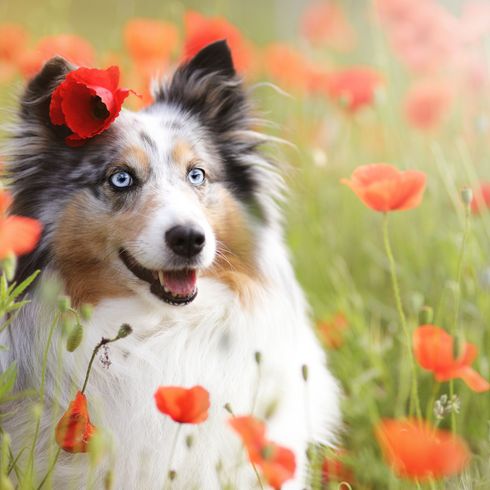
Known Diseases
MDR1 defect
The MDR1 defect is a defect in the MDR1 gene that can occur in some breeds of dogs and in humans. This results in the deficient or absent synthesis of a certain protein which is an important component of the blood-brain barrier, leading to hypersensitivity to some drugs.
Eye diseases
Often occur with allergies and intolerances.
FAQ
-
A Sheltie needs a lot of outdoor exercise and a lot of head work. It is ideal if you live on a farm or want to do dog sports. Otherwise, you need to be very active and spend several hours a day outdoors with the dog.
-
Yes the Shetland Sheepdog can also be used as a family dog. But is basically a herding dog and needs a very active family.
-
A Sheltie puppy costs up to 2500 Euro, depending on the coloring and serious breeding. There are merle colored dogs, these cost rather 2500 euros.
-
Shetland Sheepdog males have an ideal stature of 37 cm, bitches of 35.5 cm. A deviation of more than 2.5 cm above or below this mass is highly undesirable in breeding specimens.
-
Shelties do not usually have a strong pronounced jadge drive.
-
Yes, Shelties make excellent family dogs.
-
Yes, Shelties are great for beginners in dog ownership.
-
The Sheltie, or Shetland Sheepdog, is an enterprising breed of dog that is also suitable for beginners.







